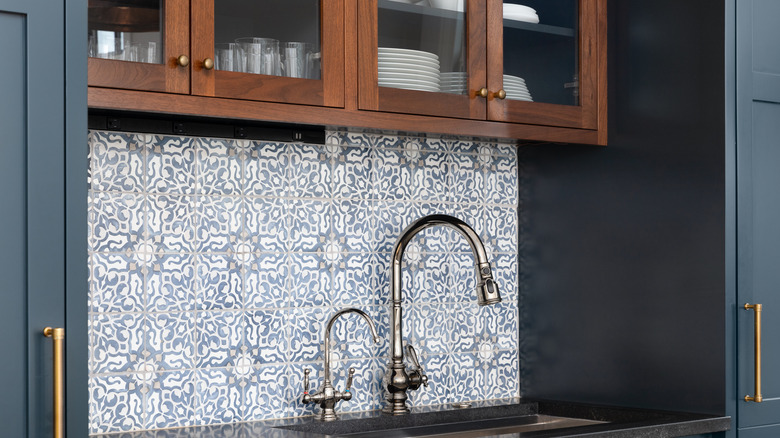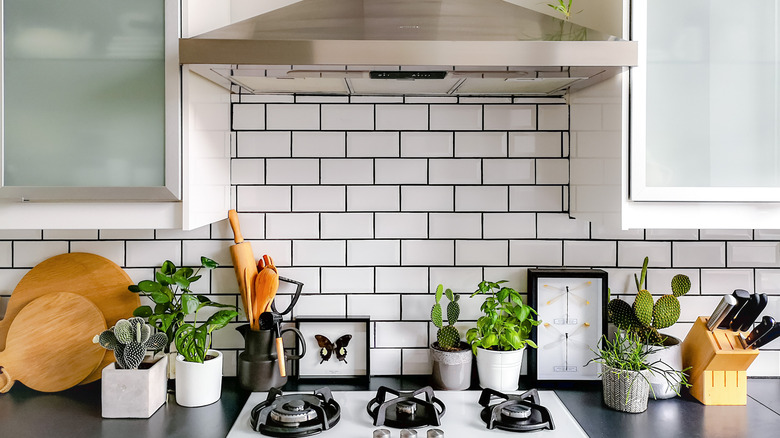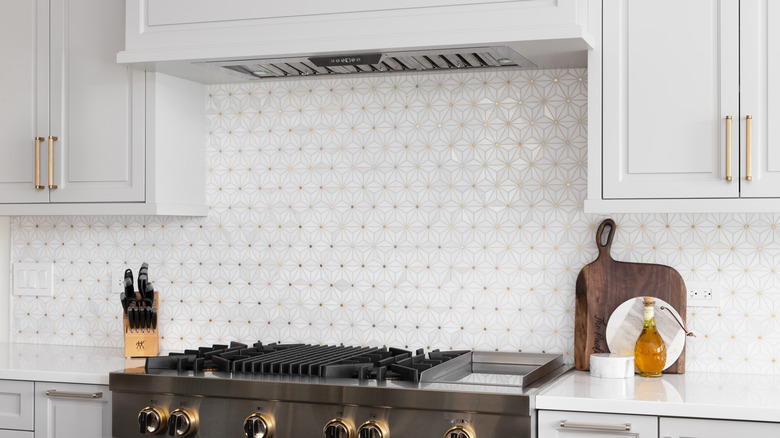3 Hacks For Easily Installing Peel-And-Stick Backsplash
Kitchen renovations can be exciting but also long and tedious, especially when it comes to installing a backsplash. The outcome is worth the toil, but what if there were some tips and tricks to make the job easier? Peel and stick options make this particular task a breeze, and as long as you know how to apply it properly, it can look amazingly chic. You don't want to go in without preparing, but the following hacks can help ensure it sits perfectly on the wall without bumps, bubbles, or uneven seams.
Whether it's time for a change or you're repairing old or damaged kitchen walls, the peel-and-stick backsplash can breathe new life into a space. One of the most important things to do before starting is to prep your wall. According to Green Garage Blog, these stickers are relatively user-friendly. However, while it can be easier to apply them instead of real tiles, doing it improperly leaves them looking lackluster. While this process lets you forgo messy grout or DIY spacers, it still requires some patience and practice. Prepping will ensure everything adheres properly. To get your walls ready, wipe them down to clear away dust and debris. Remove any screws, nails, or hooks, then take the time to fill in holes and sand any uneven surfaces down. The smoother the area you're covering, the better the materials will stick and sit flat, giving a professional appearance rather than bumps and bubbles, per Smart Tiles.
Create a straight line guide
When you start installing stick-and-peel tiles or wallpaper, it might be easy to assume your wall is straight and just follow the natural pattern it creates. One of the biggest mistakes people make is not taking the time to map out straight lines to guide them when they apply these materials. Your walls might be slightly off-kilter, or the existing pattern might be uneven. Manuals+ recommends using a level to create a guideline, which will help you create the perfect alignment for your pattern.
You can find levels at your local home improvement store, then use a pencil to mark out a line that goes across the entire area you plan to cover. Once the first section is applied, it will be easy to follow that for the rest of the tiles or paper. Without a straight line to guide the first row, one tiny mistake can make the entire backsplash look off. If you take the time to map out a plan, the results will look high-end and professional.
Keep a craft knife handy
Keep a craft knife handy for cutting out different areas of tile or altering anything that needs it. Place the tiles against the edges and corners of your backsplash area before sticking them down to see if they need to be cut first. By trimming your materials to sit flush in your kitchen, you're ensuring the end result will look clean and aesthetically pleasing. Don't assume that they come from the store perfectly fitted to any space. You'll need to take the time to figure out the best way to place and line everything up, rather than just assuming it is one size fits all.
Exacto or craft knives are helpful for those specific alterations that need to be made and help make the job easier and more precise. The Homes I Have Made recommends measuring out your wallpaper (if that is what you're using instead of peel and stick tiles) before cutting so you know exactly how much needs to be removed. Tiles might also require some adjustments, which is why having a sharp knife nearby will come in handy for your project. Take your time, and don't worry if something doesn't sit exactly right. One of the perks of peel and stick backsplash is the fact that it can be removed, and you can start over!


